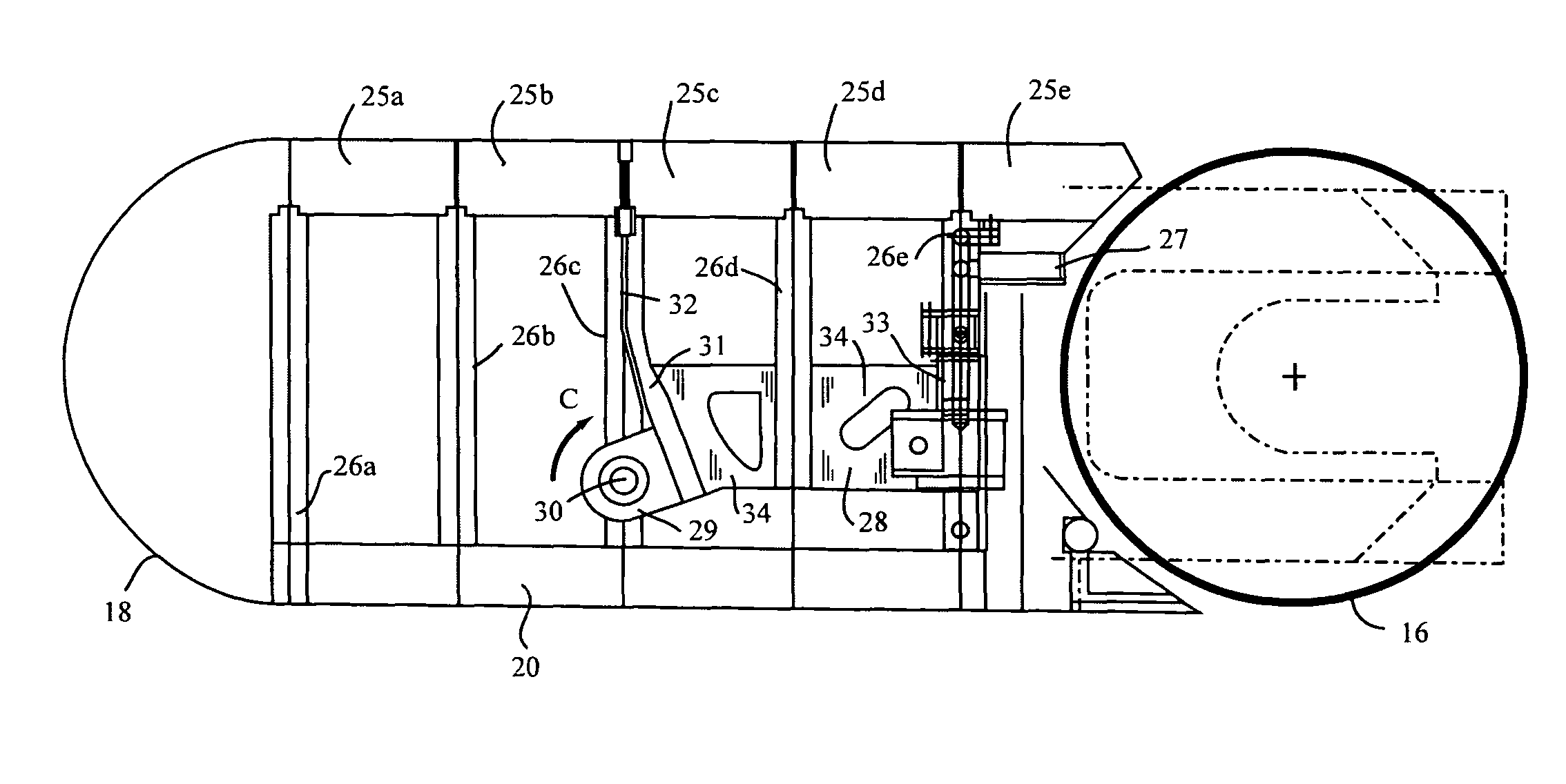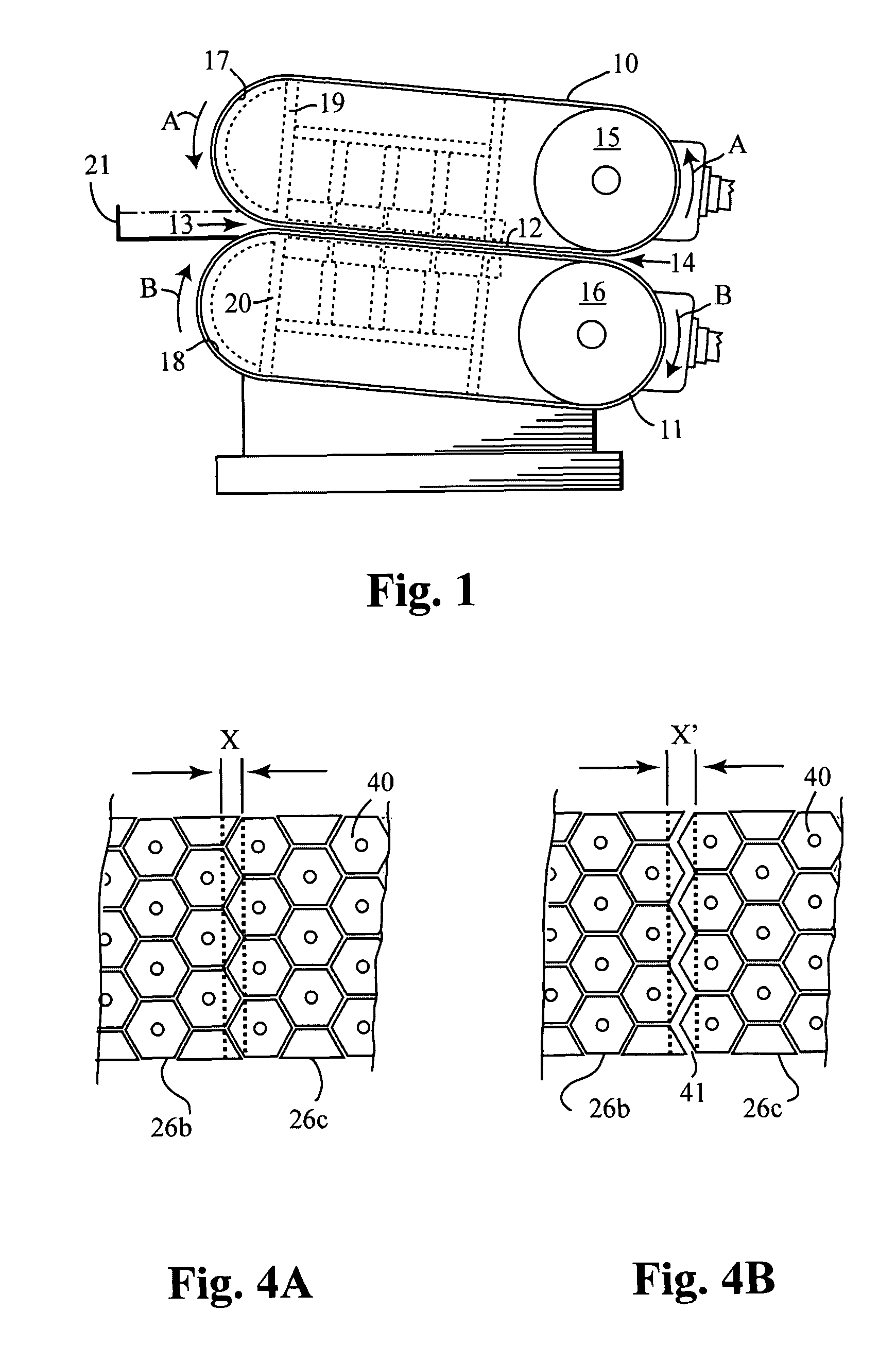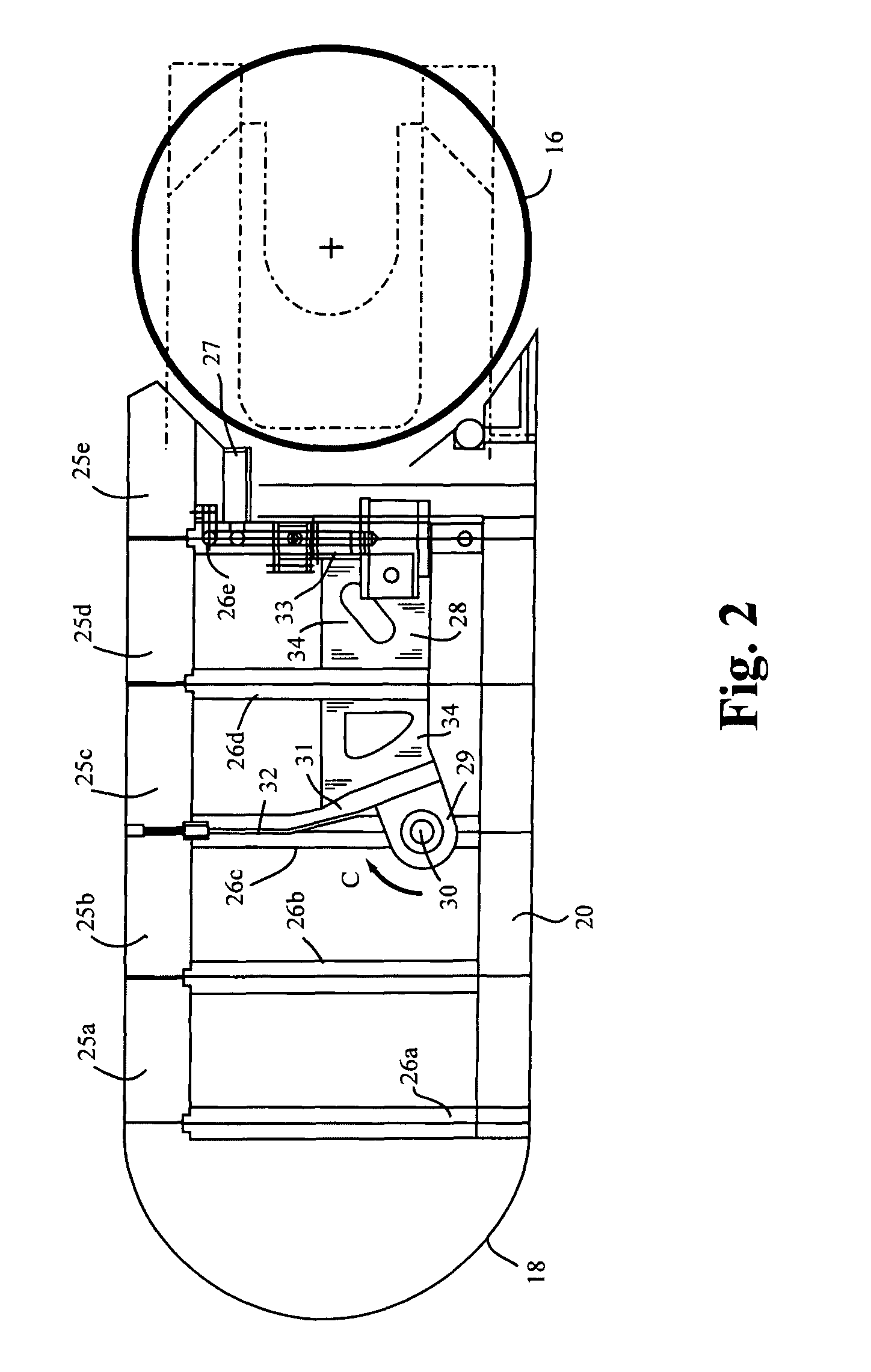Belt casting machine having adjustable contact length with cast metal slab
a belt casting machine and contact length technology, applied in the field of twin belt casting, can solve the problems of reducing the heat extraction rate of the caster designed to cast foil alloy, requiring a relatively low heat extraction rate, and having a relatively long cavity, so as to prevent any over-cooling effect, reduce the amount of heat being removed, and maintain the effect of continuous throughpu
- Summary
- Abstract
- Description
- Claims
- Application Information
AI Technical Summary
Benefits of technology
Problems solved by technology
Method used
Image
Examples
Embodiment Construction
[0022]Referring to the drawings, an example of a basic belt casting machine to which the present invention may be applied is shown in FIG. 1. It includes a pair of resiliently flexible, heat conducing metal bands, forming upper and lower endless belts 10 and 11. These belts travel in looped paths in the directions of arrows A and B so that, in traversing a region where they are close together (i.e. a confronting section of fixed length), the belts define a casting cavity 12 (parallel or slightly converging) extending from a liquid metal entrance end 13 to a solid strip discharge exit end 14. The belts 10 and 11 are respectively driven and carried around by large drive rollers 15 and 16, to return toward the entrance end 13, after passing around curved, liquid-layer bearing structures, respectively shown at 17 and 18. Supporting carriage structures 19 and 20 are provided for the respective belts 10 and 11, while the drive rolls 15 and 16 are appropriately carried and connected for su...
PUM
| Property | Measurement | Unit |
|---|---|---|
| linear shrinkage | aaaaa | aaaaa |
| length | aaaaa | aaaaa |
| length | aaaaa | aaaaa |
Abstract
Description
Claims
Application Information
 Login to View More
Login to View More - R&D
- Intellectual Property
- Life Sciences
- Materials
- Tech Scout
- Unparalleled Data Quality
- Higher Quality Content
- 60% Fewer Hallucinations
Browse by: Latest US Patents, China's latest patents, Technical Efficacy Thesaurus, Application Domain, Technology Topic, Popular Technical Reports.
© 2025 PatSnap. All rights reserved.Legal|Privacy policy|Modern Slavery Act Transparency Statement|Sitemap|About US| Contact US: help@patsnap.com



